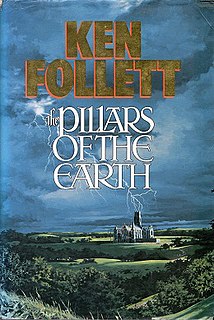 W
WThe Anarchy was a civil war in England and Normandy between 1135 and 1153, which resulted in a widespread breakdown in law and order. The conflict was a succession crisis precipitated by the accidental death by drowning of William Adelin, the only legitimate son of Henry I, in the sinking of the White Ship in 1120. Henry's attempts to install his daughter, the Empress Matilda, as his successor were unsuccessful and on Henry's death in 1135, his nephew Stephen of Blois seized the throne with the help of Stephen's brother, Henry of Blois, the Bishop of Winchester. Stephen's early reign was marked by fierce fighting with English barons, rebellious Welsh leaders and Scottish invaders. Following a major rebellion in the south-west of England, Matilda invaded in 1139 with the help of her half-brother Robert of Gloucester.
 W
WAdulterine castles were fortifications built in England during the 12th century without royal approval, particularly during the civil war of the Anarchy between 1139 and 1154.
 W
WKen Follett's The Pillars of the Earth is a point-and-click adventure video game developed and published by German studio Daedalic Entertainment. It is based on Ken Follett’s award-winning 1989 novel of the same name, which was adapted as a videogame across 21 playable chapters. Book 1 of the game was released on 16 August 2017, Book 2 on 13 December 2017, and Book 3 on 29 March 2018.
 W
WThe Pillars of the Earth is a historical novel by Welsh author Ken Follett published in 1989 about the building of a cathedral in the fictional town of Kingsbridge, England. Set in the 12th century, the novel covers the time between the sinking of the White Ship and the murder of Thomas Becket, but focuses primarily on the Anarchy. The book traces the development of Gothic architecture out of the preceding Romanesque architecture, and the fortunes of the Kingsbridge priory and village against the backdrop of historical events of the time.
 W
WThe siege of Oxford took place during The Anarchy—a period of civil war following the death of Henry I of England without an heir—in 1142. Fought between his nephew, Stephen of Blois, and his daughter, the Empress Matilda, who had recently been expelled from her base in Westminster and chosen the City of Oxford as her new headquarters. Oxford by now was effectively a regional capital and important in its own right. It was a well-defended city with both rivers and walls protecting it, and was also strategically important as it was at a crossroads between the north, south-east and west of England, and also not far from London.
 W
WThe Treaty of Wallingford, also known as the Treaty of Winchester or the Treaty of Westminster, was an agreement reached in England in the summer of 1153. It effectively ended a civil war known as the Anarchy (1135–54), caused by a dispute over the English crown between King Stephen and his cousin Empress Matilda. The Treaty of Wallingford allowed Stephen to keep the throne until his death, but ensured that he would be succeeded by Matilda's son Henry II.
 W
WThe White Ship was a vessel that sank in the English Channel near the Normandy coast off Barfleur, on 25 November 1120. Only one of approximately 300 people aboard survived, a butcher from Rouen. Those who drowned included William Adelin, the only in-wedlock son and heir of King Henry I of England, his half-sister Matilda of Perche, his half-brother Richard, Richard d'Avranches, 2nd Earl of Chester, and Geoffrey Ridel. William Adelin's death led to a succession crisis and a period of civil war in England from 1135–53 known as the Anarchy.